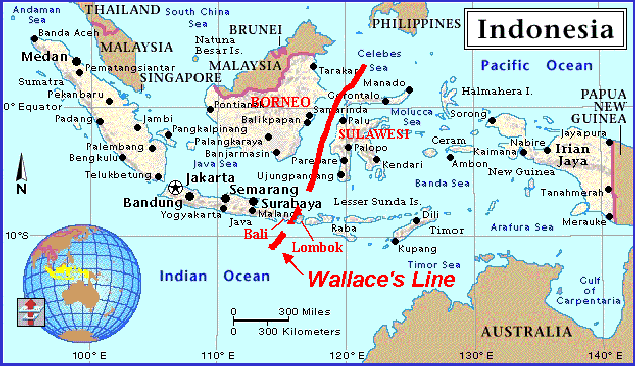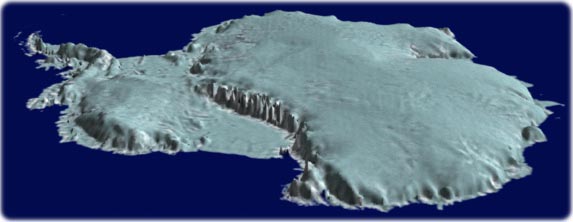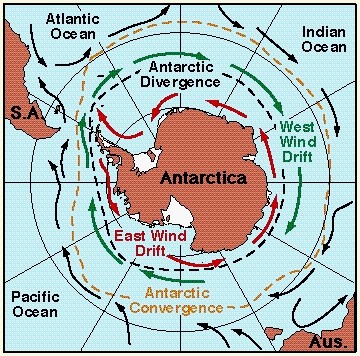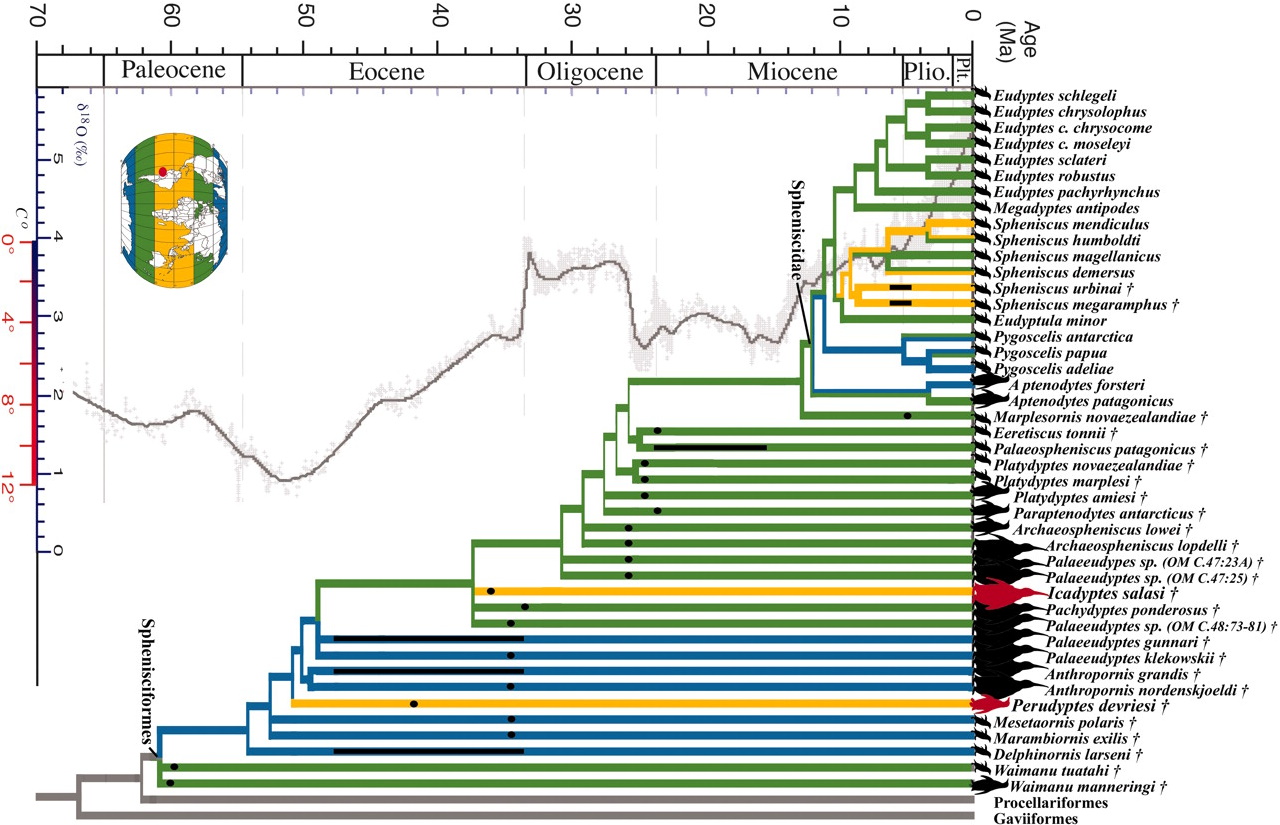Penguins' swimming prowess cost them their ability to fly, a new study says.

An Adélie penguin flaps its wings, which help the bird to swim.
Photograph by John Eastcott and Yva Momatiuk, National Geographic
for National Geographic
Published May 20, 2013
Penguins lost the ability to fly eons ago, and scientists may have finally figured out why. A new study suggests that getting off the ground eventually just took too much effort for birds that were becoming expert swimmers.
Flight might make some aspects of penguins' Antarctic life much easier. The grueling march of the emperor penguins, for example, might take only a few easy hours rather than many deadly days. Escaping predators like leopard seals
at the water's edge would also be easier if penguins could take
flight-so scientists have often wondered why and how the birds lost that
ability.
A popular theory of biomechanics suggests that
the birds' once-flight-adapted wings simply became more and more
efficient for swimming and eventually lost their ability to get penguins
off the ground.
More efficient diving, on the other
hand, increased the opportunities to forage for food at depth. A modern
emperor penguin can hold its breath for more than 20 minutes and quickly
dive to 1,500 feet (450 meters) to feast.
The new study of energy costs in living birds that both fly and dive provides critical evidence to back up this theory.
"Clearly,
form constrains function in wild animals, and movement in one medium
creates tradeoffs with movement in a second medium," study co-author
Kyle Elliott, of the University of Manitoba, said in a statement.
"Bottom line is that good flippers don't fly very well."
Sit, Swim, and Fly
The thick-billed murre or Brünnich's guillemot (Uria lomvia)
uses its wings for diving much like penguins, but it also flies.
Scientists theorized that its physiology and energy use may closely
resemble those of the last flying penguin ancestors.
Other swimming birds, pelagic cormorants (Phalacrocorax pelagicus),
propel themselves through the water with their feet. Elliott and
colleagues assert that these birds can be considered biomechanical
models for the lifestyle energy use of an ancient penguin ancestor that
was the last of its line to take flight.
The thorough
technical and isotope analysis of how guillemots burn energy reveals why
today's penguins are grounded. Guillemots dive more efficiently than
any other flying bird and are bested in diving only by penguins
themselves, according to the study.
Flight, however, costs them more energy than any other known bird or vertebrate and has become difficult to maintain.
"Basically
the birds do only three things: sit, swim, and fly. So by measuring
lots of birds and combining their time budgets with the total costs of
living from the isotope measures, it is possible to calculate how much
each component of the budget costs," explained study co-author John
Speakman, who leads the Energetics Research Group at the University of Aberdeen, Scotland.
"The assumption is that [penguins] evolved from an auk-like ancestor," Speakman continued.
"This
would involve a progressive reduction in wing size, which makes diving
more efficient and flying less so. Penguin bones also thickened over the
ages, as lighter bones that make it easier for birds to fly gave way to
more dense bones, which may have helped make them less buoyant for
diving." But Speakman believes the wing changes were the primary
adaptation.
Elegant Explanation
"These results make a lot of sense," said University of Texas at Austin's Julia Clarke, who studies bird evolution and how the flight stroke was co-opted for underwater diving.
"There
have been different scenarios explored for the origin of penguins but
little relevant data. These new findings from other diving birds like
murres provide an elegant explanation of a key step in the
wing-to-flipper transition."
Katsufumi Sato,
a behavioral ecologist at the University of Tokyo's Ocean Research
Institute and a National Geographic Society Emerging Explorer, added
that the work indicates an important reason why penguins stopped flying
and evolved larger body sizes—they needed an edge in the water.
"An interesting example is the little penguin, which is smaller than some Alcidae
[a family of penguins]," and weighs only about two pounds (one
kilogram), said Sato. "[The] dive cost of the murre is similar to that
of the little penguin, which means little penguins cannot survive
against the murre, which can dive and fly."
Bigger
bodies boost dive efficiency and allow for longer dives, which may be
why rapid evolution produced so many bigger-bodied penguins soon after
the animals lost the ability to fly.
Penguins Grounded by Taste for Fish?
Comparing multiple species, in the way this study does, points to a compelling pattern, said Chris Thaxter, a seabird ecologist with the British Trust for Ornithology.
"When
wings are used both above and below water, there may be an evolutionary
tipping point beyond which flight is too costly and unsustainable."
Clarke, Sato, and Thaxter were not involved in the study, which was
published in the May 20 edition of the journal Proceedings of the National Academy of Sciences.
Scientists
don't have fossils of flighted penguin ancestors, and the earliest
known penguin dates to just after the Cretaceous-Tertiary boundary (58
to 60 million years ago).
"It is tempting to speculate
that the evolution of penguins happened in that explosive radiation [of
mammal species] that happened just after the K-T event,"
when many species went extinct, Speakman said. "However, there is no
direct evidence to support this, and it could have happened any time
during the late Cretaceous."
In nature such adaptations
happen for good reason, typically related to survival and reproduction.
So a convincing case might be made for why penguins would have given up
flight while taking to the seas.
"What we do know is
that in the radiation of the mammals after the K-T event, there suddenly
[in geological terms] appear a whole load of mammals that would have
been serious competitors for aquatic resources [like] cetaceans and
pinnipeds," Speakman said.
source


 Oviraptorid skeleton and eggs in the Senckenberg Museum in Frankfurt am Main. (Credit: EvaK via
Oviraptorid skeleton and eggs in the Senckenberg Museum in Frankfurt am Main. (Credit: EvaK via 















